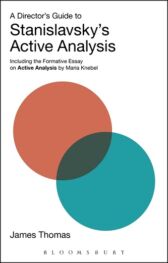Synopsis
A Director's Guide to Stanislavsky's Active Analysis
Published by Methuen
A Director's Guide to Stanislavsky's Active Analysis describes Active Analysis, the innovative rehearsal method Stanislavsky formulated in his final years
By uniting 'mental analysis' and 'études', Active Analysis puts an end to the problem of mind-body dualism and formalized text memorization that traditional rehearsal methods foster
The book describes Active Analysis both practically and conceptually ...
Part One guides the reader through the entire process of Active Analysis, using A Midsummer Night's Dream as a practical reference point
The inspiration here is the work of the Russian director Anatoly Efros, whose pioneering work led the way for a reawakening of theatre in post-Soviet Russia
Part Two is the first English translation of Maria Knebel's foundational article about Active Analysis
Knebel was chosen by Stanislavsky to carry his final work forward in unadulterated form for succeeding generations of directors and actors
A Director's Guide to Stanislavsky's Active Analysis provides the first detailed explanation of Active Analysis from the director's perspective, while also meeting the needs of actors who seek to enhance their creative involvement in the process of play production
TABLE OF CONTENTS
Preface
Introduction
PART 1: A DIRECTOR'S WORK WITH ACTIVE ANALYSIS
I. Choosing the Play
II. Director's Plan: General Challenges
III. Director's Plan: Action Analysis
IV. An Introductory Conversation with Stanislavsky about Active Analysis
V. Active Analysis in Rehearsal
VI. Further Active Analysis and Testing
VII. Conclusion: Rehearsal Realities
PART 2: ACTIVE ANALYSIS OF THE PLAY AND THE ROLE by Maria Knebel
Preface
I. General Principles of Active Analysis
II. Details are Important
III. Main Advantages of Active Analysis
IV. Beyond Etudes
V. Active Analysis Compared to the Method of Physical Actions
VI. Conclusion
Bibliography
James Thomas is a Professor in the Department of Theatre and Dance at Wayne State University
 $31.99
$31.99